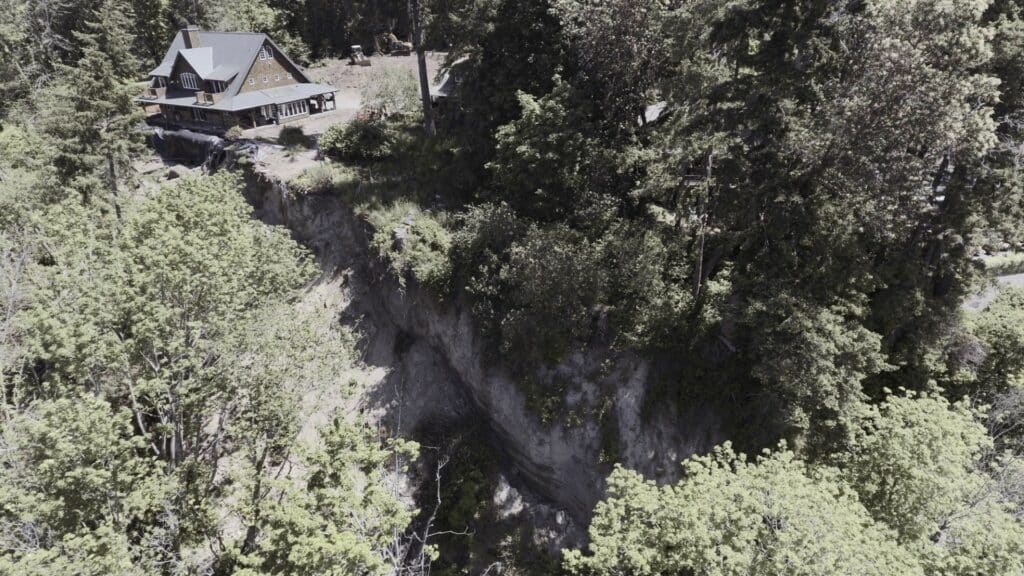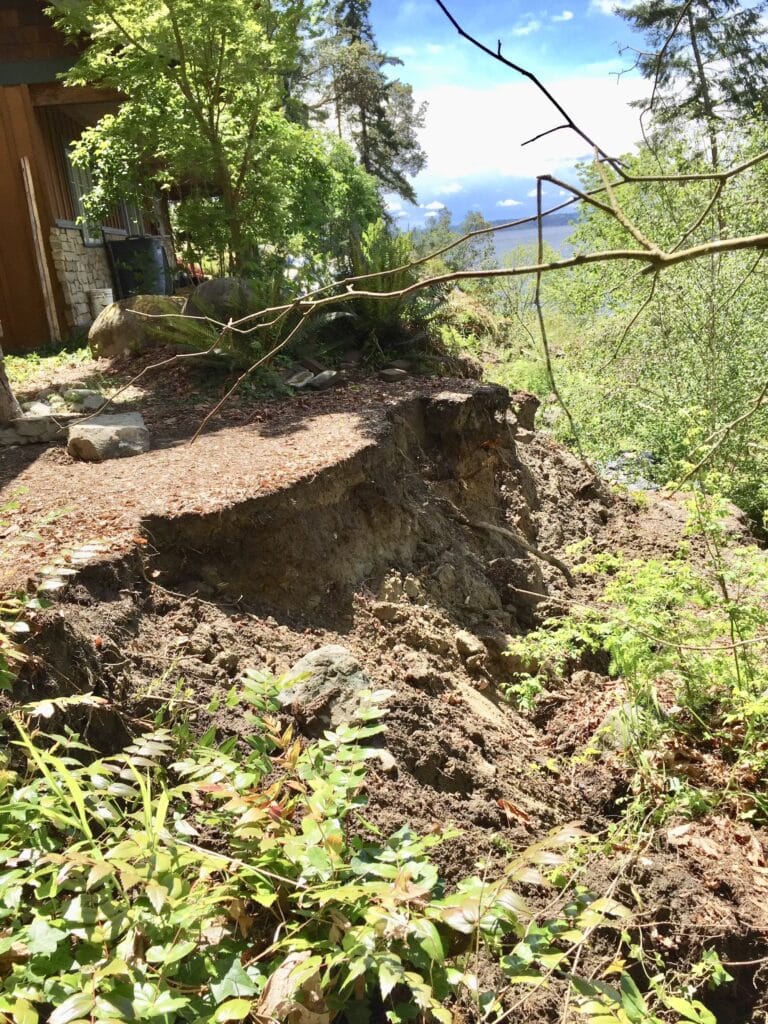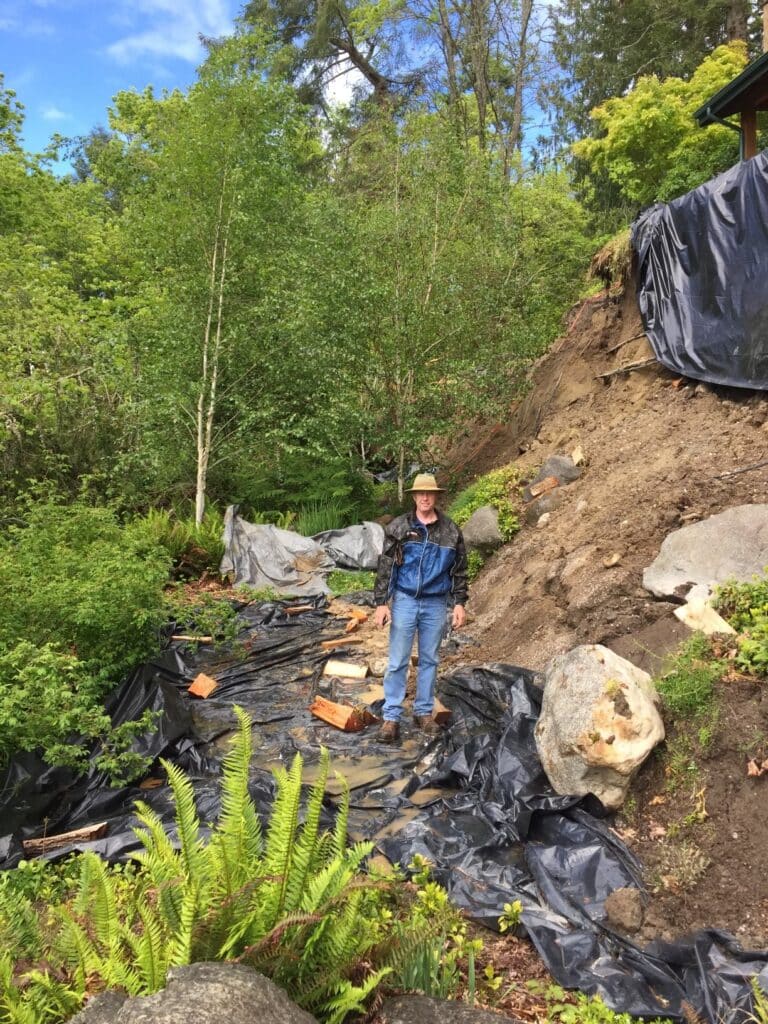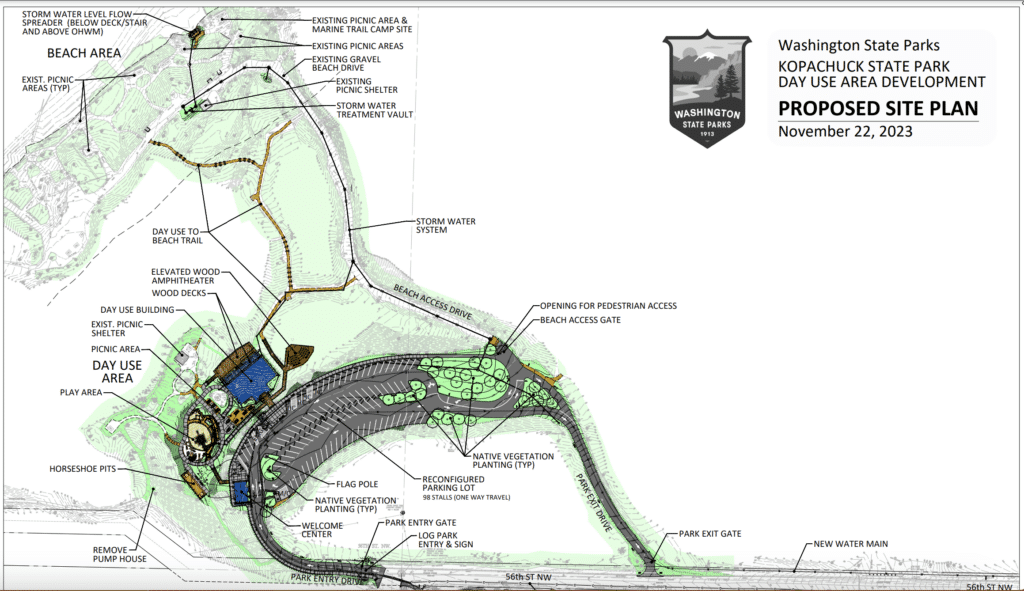Community Environment Government
Lawsuit alleges Kopachuck at risk of landslide from redevelopment
A long-awaited Kopachuck State Park makeover could be delayed again. A neighbor has filed a lawsuit seeking to halt work until more landslide analysis assures that it’s safe.
Community Sponsor
Community stories are made possible in part by Peninsula Light Co, a proud sponsor of Gig Harbor Now.
State Parks closed Kopachuck on June 3 to begin converting it from a campground-based park to a day-use facility. The campground closed in summer 2011, after officials discovered diseased trees that could fall on campers.
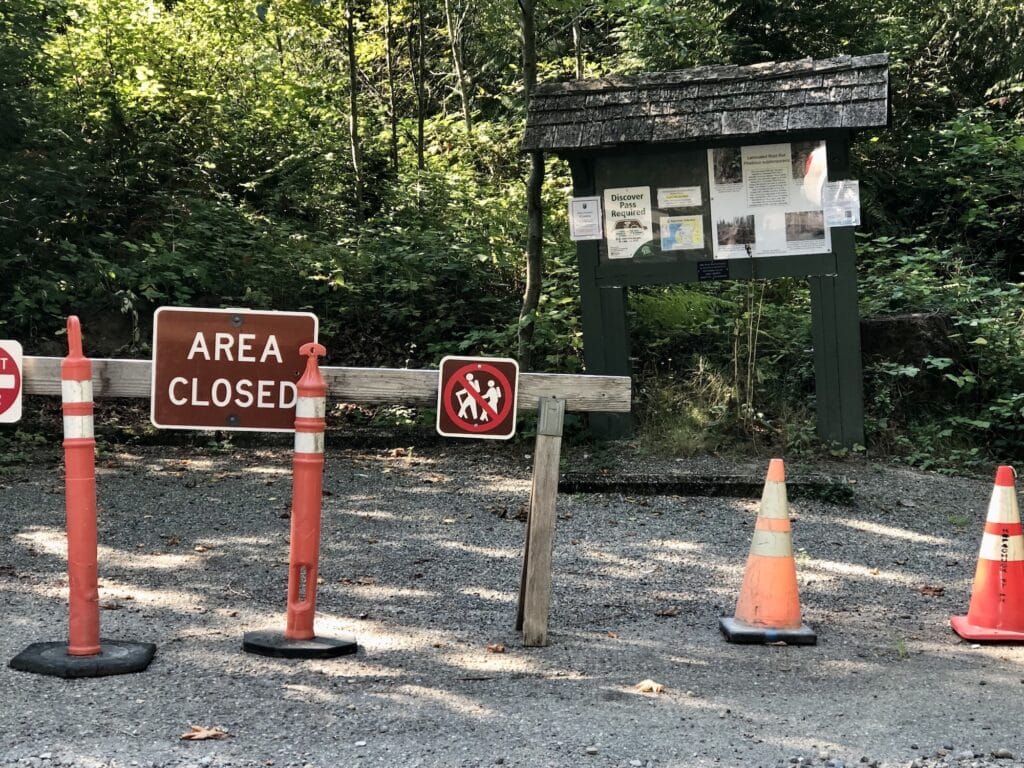
Kopachuck State Park closed for more than a year on June 3 to add day-use improvements. Photo by Ed Friedrich
The state spent the intervening 13 years planning and securing funds. Plans feature replacing an antiquated restroom and building a new welcome center, multipurpose building, picnic area, amphitheater and play areas. The parking lot, entry and exit roads will be reconstructed. New water, sewer and storm-water management systems would support the renovations.
$8.6 million renovation
Mountain Construction of Tacoma won an $8.6 million contract for the work. The project will continue through mid-summer 2025.
On July 23, an attorney representing neighbor Thomas J. Rafoth filed suit in Pierce County Superior Court seeking to stop State Parks from harvesting trees. Gig Harbor land-use attorney Jane Koler asked the court to require the agency to obtain a Forest Practices Act permit from the state Department of Natural Resources and seek approval under Pierce County’s Critical Areas Ordinance before removing trees.
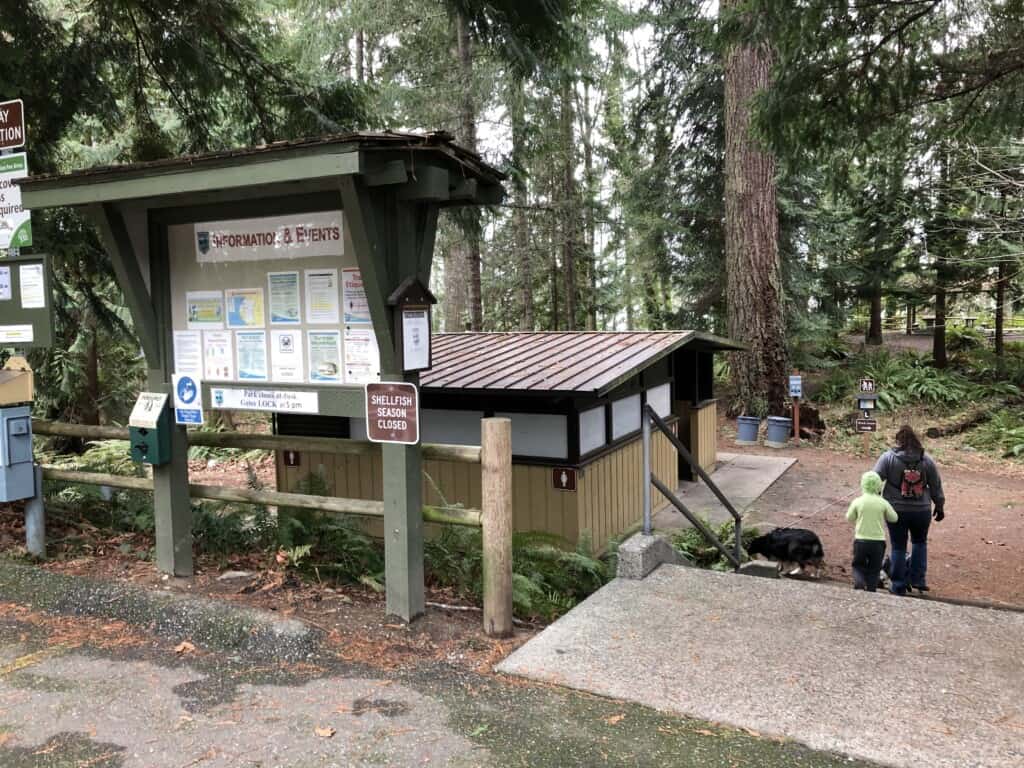
This restroom in the upper part of Kopachuck State Park has been removed. A multipurpose building adjacent to play and picnic areas will be built in the vicinity. Photo by Ed Friedrich Ed Friedrich / Gig Harbor Now
Hundreds of Douglas firs with laminated root rot were logged from 6.5 acres in 2012. DNR told State Parks it didn’t need a Forest Practices Act permit then because the trees were hazardous. But DNR found that a permit was necessary to harvest 26 acres of “alleged” hazardous trees in Phase 2, according to the lawsuit.
Temporary restraining order denied
The lawsuit sought a temporary restraining order to stop work immediately. A judge rejected that request because accompanying documents were old, from 2012 when the original plan was put in place, said Rafoth. State Parks no longer intends to clear-cut 26 acres, for example.
The project area is 3.5 acres, with tree removal on three-quarters of an acre, State Parks Communications Manager Sarah Fronk said. Contractors will remove only 25 trees; 20 are already gone. The remaining five are scheduled to go down Thursday, Sept. 12.
Work will continue at least until the lawsuit is heard. All that is on the docket now is a status conference on Nov. 15, said Legal Assistant Jennifer Lord.
Rafoth claims that the 2012 clearcut of 6.5 acres of park trees directly uphill from his property caused a 2017 landslide. He alleges their removal increased the groundwater level, as they no longer were absorbing rainwater, and destabilized an area known for shifting.
GeoResources, an earth science and geotechnical engineering consultant hired by Raforth, concluded in a July 2021 memo that the timber harvest was the significant contributing factor resulting in the landslide, according to the lawsuit.
State paid $1 million to move back house
Rafoth sued. The state settled, without admitting fault, for $1.1 million, according to a State Parks document. The money went toward moving Rafoth’s house back 120 feet and installing eight dewatering wells to lower the water level.
The lawsuit states that DNR initially assisted in project planning, but “would neither support nor be involved with the Phase 2 harvest because it represented such a huge risk of slope failure” and threatened the safety of homes because the trees were growing in a deep-seated, active landslide area.
A Feb. 23, 2012, email from DNR’s region manager of South Puget Sound’s Forest Practices Division states that DNR is “respectfully declining to continue involvement in the second harvest in Kopachuck State Park.” A review by specialists “determined that the harvest would have a high probability of causing slope failure and have a high consequence related to such failure (homes below the slope). The bottom line is that if this were our project, we definitely would not proceed as it stands now and there isn’t much, if any, opportunity to mitigate the risk to any great degree.”
Suit alleges State Parks needed more permits
The suit adds that a Pierce County planner notified State Parks that it had to comply with Pierce County critical area regulations that regulate steep slopes, which are classified as no-touch areas and only allow tree cutting in rare circumstances after extensive geotechnical studies. And it says an assistant attorney general informed State Parks that it had to obtain a Forest Practices Act permit to authorize the Phase 2 harvest.
State Parks’ Fronk stated Thursday that, “We have followed all the necessary requirements and received the appropriate permits for this work.”
DNR said Friday that without the full details of proposed forest practice activities, it can’t judge whether a permit would be required or how it would be classed.
“What’s important to note is that DNR has transferred jurisdiction to Pierce County,” DNR spokesman Michael Kelly said. “All forest practices permits involving conversion, if any are required, will need to be issued by the county …”
Conversion means converting forestland to a land use that is incompatible with growing timber.
Kelly added that forest practices in and around potentially unstable slopes or protected areas like a park might require a permit. These areas are also usually triggers for a Class IV special forest practices permit. These classes of forest practices go through additional review and must meet a higher standard of approval based on their potential for substantial impact to public resources. Unpermitted activities are then subject to enforcement, up to and including civil and criminal penalties.
Pierce County forwarded the Hearing Examiner’s approval that “should detail the county’s review and adherence to all applicable environmental regulations.”
The decision, dated Sept. 24, 2020, includes granting a conditional-use permit because the project “will not detrimentally impact the public health, safety and general welfare.” It says Washington administrative code will ensure “the proposed use will not introduce hazardous conditions at the site that cannot be mitigated to protect adjacent properties, the vicinity and the public health, safety and welfare of the community from such hazard.”
State report said risk to public safety low
Associated Earth Sciences conducted a landslide hazard geotechnical report for the county dated May 26, 2020. It concluded that the increase in the ground water level from the proposed tree removal would be nominal, less than 2 inches. “It does not significantly impact the deep-seated stability of the landslide complex” and “falls well within the range of variability in ground water recharge that results from natural variation in precipitation.”
“Should soil movement occur … It is our opinion that … the risk of soil delivery resulting in an adverse impact to park facilities or to water bodies such as Carr Inlet or which would threaten public safety is low.”
Rafoth’s GeoResources report reached a different conclusion. In a declaration included with the lawsuit by the firm’s geotechnical expert Keith Schembs, he states that the 2012 tree cutting occurred within a groundwater recharge area of a large, mapped, prehistoric landslide with documented recent movement. It prevented the root systems of trees from taking up thousands of gallons of surface water above Rafoth’s home. The excess water entered the soil and raised the underground water table that led to the slide. The Kopachuck work is within the same landslide and was never stabilized, he said.
Rafoth report states risk is down deep
State Parks never conducted the deep geotechnical evaluation with a groundwater monitoring well and 12 months of surface monitoring recommended by DNR, Rafoth said.
“They didn’t want to do the test because of the cost, the time and they were afraid of what they might find,” Rafoth said. “Their excuse for the slide was due to beach erosion by the tides and currents and just superficial creep, just the surface layer sliding down instead of a rotational slide down 30 to 40 feet. I am 200 to 300 yards south of where they’re doing the development and I’m worried about them doing more damage.
“If they can do the test and show there’s not going to be more damage to my place and the other side of the park, I can’t fight that, but I don’t believe they’ve done appropriate testing to evaluate the deep slide risks. I think it’s almost criminal. They’ve done everything they can to skirt what they should do to develop that park safely.”


